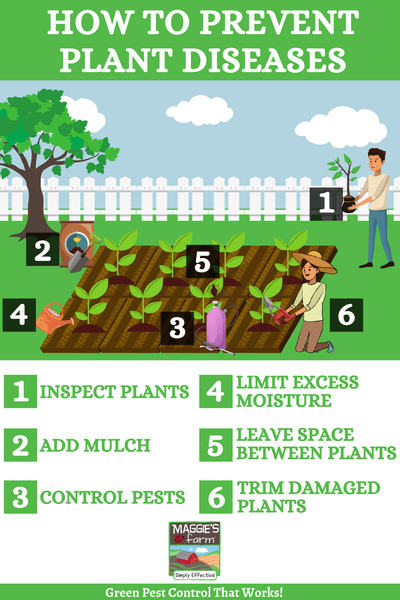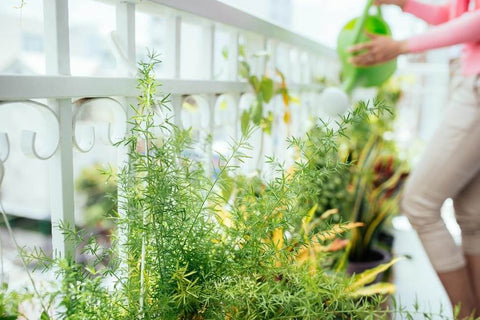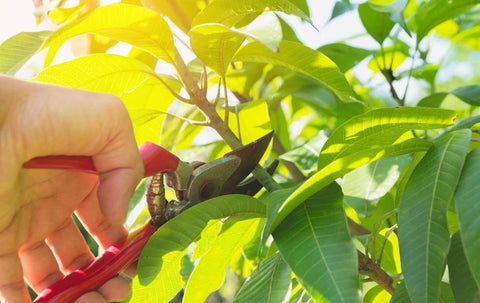Yellowing or spotted leaves can quickly fill gardeners with dread. Plant diseases, like gray mold and black spot, can harm plants and even kill them. If left untreated, they will spread to other plants in the garden. Thankfully, there are things you can do to keep your garden free of diseases. We’ve made a list of things you can do to help prevent plant diseases.

Inspect Plants

Before bringing a plant home with you, inspect it. If you notice any yellowing or wilting leaves, it may be best to leave it at the store. You’ll also want to check for any insects hiding under leaves or in the soil. This will keep diseases from spreading to the healthy plants in your garden. It’s a good idea to regularly check your garden plants too. Spotting an infection early can keep the problem from getting out of control. Look for discoloration, mold growth, or dead leaves.
Add Mulch

Adding a layer of mulch to your garden can help your plants stay healthy. Mulch provides a layer of protection between soil and plants. Bacteria and fungus in soil can easily be transferred to plants if it touches the foliage of the plant. Mulch acts as a barrier between the soil and plant. It can also help keep moisture in the soil, which allows plants to receive the nutrients they need. Mulch can be used to prevent an infected plant from spreading the disease to other plants.
Pest Control

Some insects like to feed on your favorite garden plants. Not only does their sucking of sap lead to plant damage, they can also transmit diseases. You’ll want to frequently check for garden pests, like aphids and mites, to ensure they aren’t infesting your garden. If you spot these pests, you’ll want to quickly remove them. Using a spray, like our 3-in-1 Garden Spray, can help prevent and eliminate garden pests.
Limit Excess Moisture

While plants need water to survive, too much of it can harm plants. Many diseases develop and grow in areas with excess moisture. Overwatering plants can increase your chances of developing gray mold. If your leaves look wilted but the soil is wet, overwatering could be the reason. It’s best to water plants near the soil instead of applying it on top of the leaves. Your plants will receive the water they need, but moisture won’t build-up on the leaves.
Plant Wisely

Placing your plants in an area they will thrive is important to ensuring their health. Plants left in unfavorable conditions will be more susceptible to diseases. Make sure you know the amount of sun exposure the plant needs and plant accordingly. You’ll also want to allow some space in between plants. This will prevent plants from having to fight for resources, which will keep them from weakening. Leaving space between plants also reduces the likelihood of diseases spreading to other plants.
Remove Damaged Plants

When you discover an infected plant, it’s important to prevent further damage. If you spot leaves that have spots, mold, or mildew, cut the leaves and remove them from your garden. Make sure to trim until only healthy plant tissue remains. If the entire plant shows signs of disease, you’ll want to remove it completely. By trimming or removing plants, you are helping to prevent the disease from further damaging the plant and spreading to the healthy plants in your garden.
Caring for your garden often means taking preventative measures to keep your plants healthy. Make sure you pay attention to the plants in your garden and frequently check for signs of disease. Identifying a disease early will make it easier to treat your plants. If your garden is under attack, we want to help! Check out our 3-in-1 Garden Spray to help prevent and treat plant diseases and garden pests.
